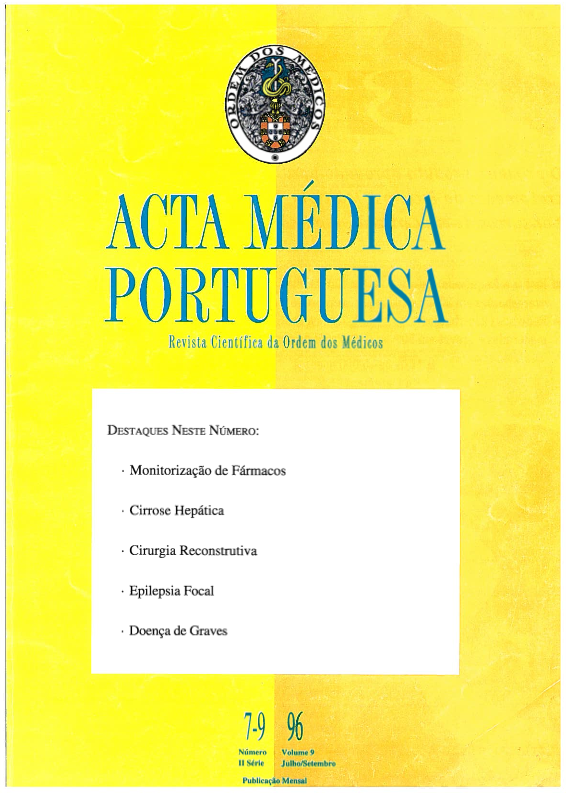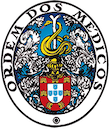Monitorização individualizada da terapêutica com gentamicina por métodos farmacocinéticos. Que Método escolher?
DOI:
https://doi.org/10.20344/amp.2609Resumo
Gentamicin has an excellent cost/efficacy ratio for gram negative infections treatment. Its use is often limited in clinical practice by its narrow safety margins and a high incidence of toxicity. Gentamicin related nephrotoxicity is a major adverse effect, mostly in patients with other concomitant potential risk factors. As many other Authors we have found in our Internal Medicine Service during 1992 a gentamicin related nephrotoxicity incidence of 22.5%. Various empiric methods and nomograms have shown a significant incidence of error in predicting individualized gentamicin dosage regimens. Pharmacokinetics methods have demonstrated much better results regarding efficacy and toxicity. The aim of this prospective study carried out during 1993-1994 was to individualize by pharmacokinetics methods dosage regimens of gentamicin in patients with one or more concomitant risk factors of nephrotoxicity. The purpose of pharmacokinetics dosage regimens has been to achieve trough serum concentrations of gentamicin in therapeutics range-0.5 to 2 micrograms/ml-on the first 24 to 48 hours of treatment, and the maintenance in this range during all the treatment, avoiding both toxic and under therapeutic levels. The incidence of gentamicin related nephrotoxicity has been evaluated in this population. Twenty patients were studied: 18 males and 2 females aged 59.6 years (19 to 85). All had one or more potential risk factors for nephrotoxicity-65 years or more: 13, previous renal failure: 6, other nephrotoxic drugs: 10, diuretics: 4, dehydration: 5, congestive heart failure: 5, diabetes: 3, hypertension: 3. For the first 10 patients gentamicin dosage regimens have been determined by Sawchuk-Zaske pharmacokinetics method and for the subsequent 10 patients by Bayesian method. The two subpopulations had no significant differences regarding mean age, sex and potential risk factors for nephrotoxicity. Results of Sawchuk-Zaske method: 53 trough gentamicin serum concentration were obtained; 86.8% were within the therapeutic range, 7.5% were toxic and 5.7% were under therapeutic. Results of Bayesian method: 44 determinations of gentamicin through concentrations were obtained; 86.3% within therapeutic range, 2.4% were toxic and 11.3% were under therapeutic. A great variability in pharmacokinetic patient's profile has been found and explains the great variability of individualized dosage regimens of gentamicin (30 to 320 mg/day). No patients had gentamicin related nephrotoxicity. Both pharmacokinetics methods lead to a efficient and save employment of gentamicin in patients with previous renal failure and other potential risk factors for nephrotoxicity.Downloads
Downloads
Como Citar
Edição
Secção
Licença
Todos os artigos publicados na AMP são de acesso aberto e cumprem os requisitos das agências de financiamento ou instituições académicas. Relativamente à utilização por terceiros a AMP rege-se pelos termos da licença Creative Commons ‘Atribuição – Uso Não-Comercial – (CC-BY-NC)’.
É da responsabilidade do autor obter permissão para reproduzir figuras, tabelas, etc., de outras publicações. Após a aceitação de um artigo, os autores serão convidados a preencher uma “Declaração de Responsabilidade Autoral e Partilha de Direitos de Autor “(http://www.actamedicaportuguesa.com/info/AMP-NormasPublicacao.pdf) e a “Declaração de Potenciais Conflitos de Interesse” (http://www.icmje.org/conflicts-of-interest) do ICMJE. Será enviado um e-mail ao autor correspondente, confirmando a receção do manuscrito.
Após a publicação, os autores ficam autorizados a disponibilizar os seus artigos em repositórios das suas instituições de origem, desde que mencionem sempre onde foram publicados e de acordo com a licença Creative Commons









